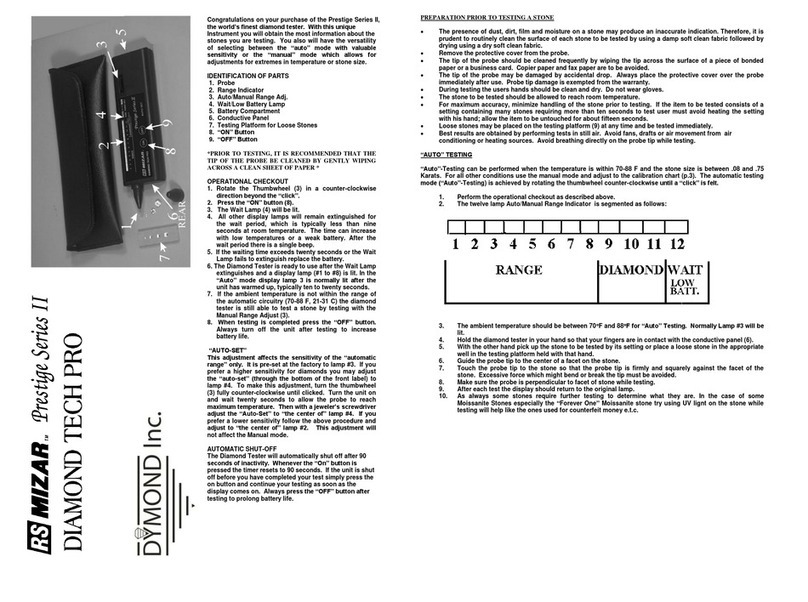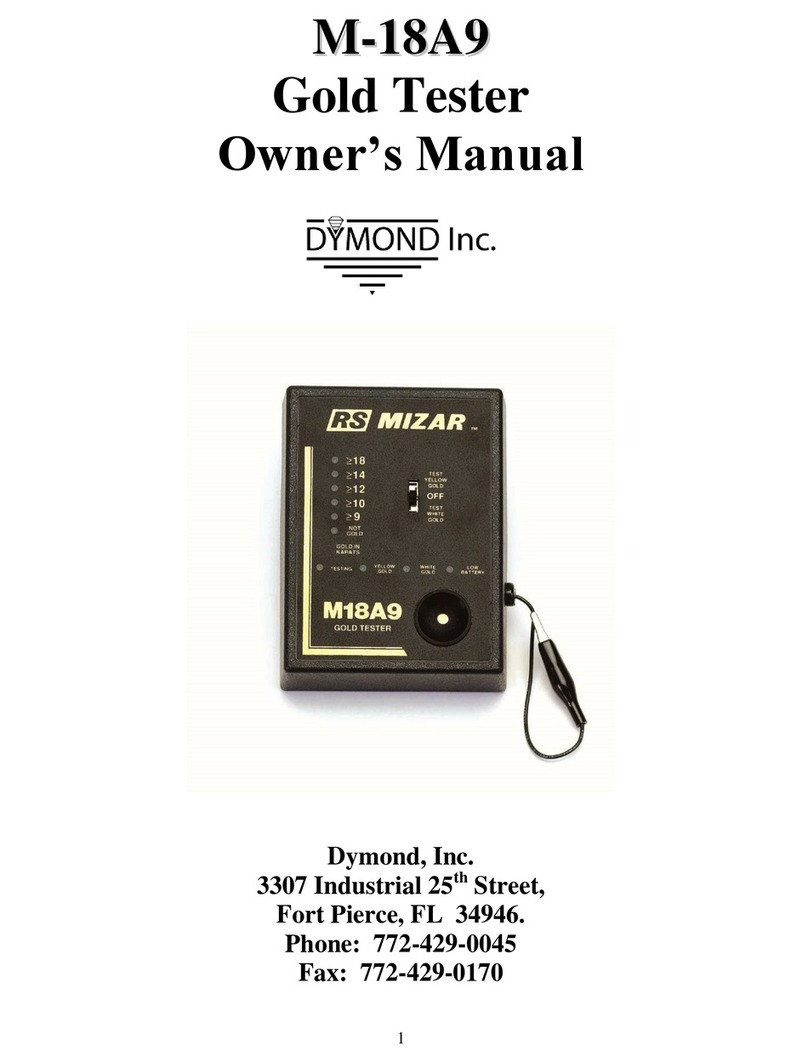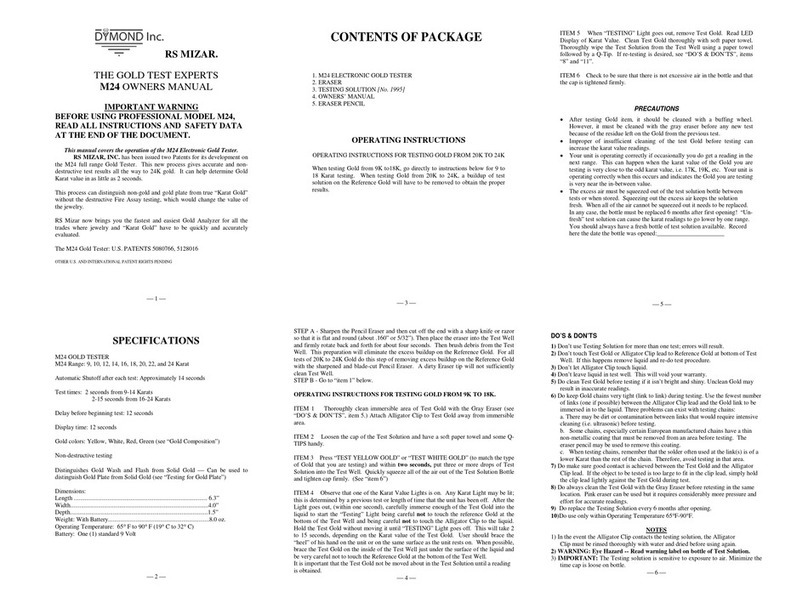Step G: Hold test gold in liquid for two seconds. Slowly count to yourself one
thousand one, one thousand two. The time it takes to say this to yourself is
approximately two seconds.
Step H: Test gold karat value will be displayed as the highest value lit. During the
two second test, 10K and 14 K readings will occur as soon as the gold enters the
liquid. 18K may take as long as 1 second to indicate.
Step I: Immediately after testing, use a paper towel or other disposable soft
absorbent item to clean the test area. Also absorb the liquid from the test well and
safely discard when finished testing or in five minutes, if doing multiple tests.
Do’s and Don’ts
Don’t leave liquid on gold after testing, it may tend to discolor the gold. This
can be removed with the eraser or by almost any jewelry brightening product.
Don’t use chemicals more than five minutes for proper results.
Don’t touch test gold or alligator clip lead to reference gold at bottom of test
well. If this happens, stop and remove liquid; carefully clean reference gold at
the bottom of the well with the eraser pencil provided, until reference gold is
bright and clean.
Don’t let alligator clip touch liquid.
Do occasionally clean reference gold at the bottom of the test well with eraser
pencil, especially if you suspect any test error.
Don’t leave liquid in test well. Do clean after each test or after five minutes.
Do clean test gold, if necessary, before testing. Unclean gold may result in
inaccurate readings. In any case, do clean gold before retesting in the same
area.
Do keep gold chains very tight (link to link) during testing. Use the fewest
number of links (one if possible) between the alligator clip lead and the gold
link to be immersed into the liquid.
There may be dirt or contamination between links that would require intensive
cleaning (i.e. ultrasonic) before testing.
Some chains, especially certain European manufactured chains have a thin
non-metallic coating that must be removed before testing that area. The eraser
pencil may be used to remove this coating.
When testing chains, remember that the solder often used at the link is of a
lower karat than the rest of the chain. Therefore, avoid testing in that area.
Do make sure good contact is achieved between the test gold and the alligator
clip lead. If the object to be tested is too large to fit in the clip lead, simply
hold the clip lead tightly against the test gold during test.
Do always clean the test gold surface with eraser or suitable cleaner before any
repeat testing.
Do replace the electrolyte and the activator kit every 18 months.
INSTRUCTIONS
ET18 & ET18-9
Electronic Touchstone ™
Gold Tester
Congratulations on your selection of the R S Mizar ET18 Electronic Touchstone Gold
Tester. You will be pleased with the world’s fastest and easiest to use gold tester.
With minimal care you will have years of accurate and maintenance free service.
Before testing, read the entire instructions, bottle labels, and the following:
The “Activator” is a peroxide similar to peroxides used in the home but stronger. If
contaminated (i.e. drops dispensed and then drawn back into bottle) peroxide will
gradually release oxygen under pressure.
If contamination such as described above, or any other contamination occurs, you
must then safely dispose of Activator.
Do not keep contaminated Activator bottle. Replacement bottles of activator are
available at a nominal charge through your distributor and your dealer. ET18-9 has 9
Karat instead of 10 Karat range.
Width –2.65” Height – 3.75” Depth – 0.87” Weight – 4 0z
US Patents 5080766, 5128016 Other U.S. and International Patent rights pending
Operating Instructions
Step A: Turn power switch up for yellow or green gold and down for white or pink
gold. The NOT GOLD indicator should be lit.
Step B: Dispense exactly one drop of ET18 activator into test well.
Step C: Dispense exactly 3 drops of ET18 electrolyte into test well. Never reverse
the order of activator and electrolyte or inaccurate reading may be obtained.
Step D: If required, carefully clean gold with the eraser at area to be immersed in test
well. Always clean gold before retesting in the same area.
Step E: Attach alligator clip lead to the test gold.
Step F: Carefully immerse into liquid in well without touching reference gold at
bottom of well and without touching the alligator clip to the liquid (note clip must be
thoroughly cleaned and dried after any accidental immersion.)






















